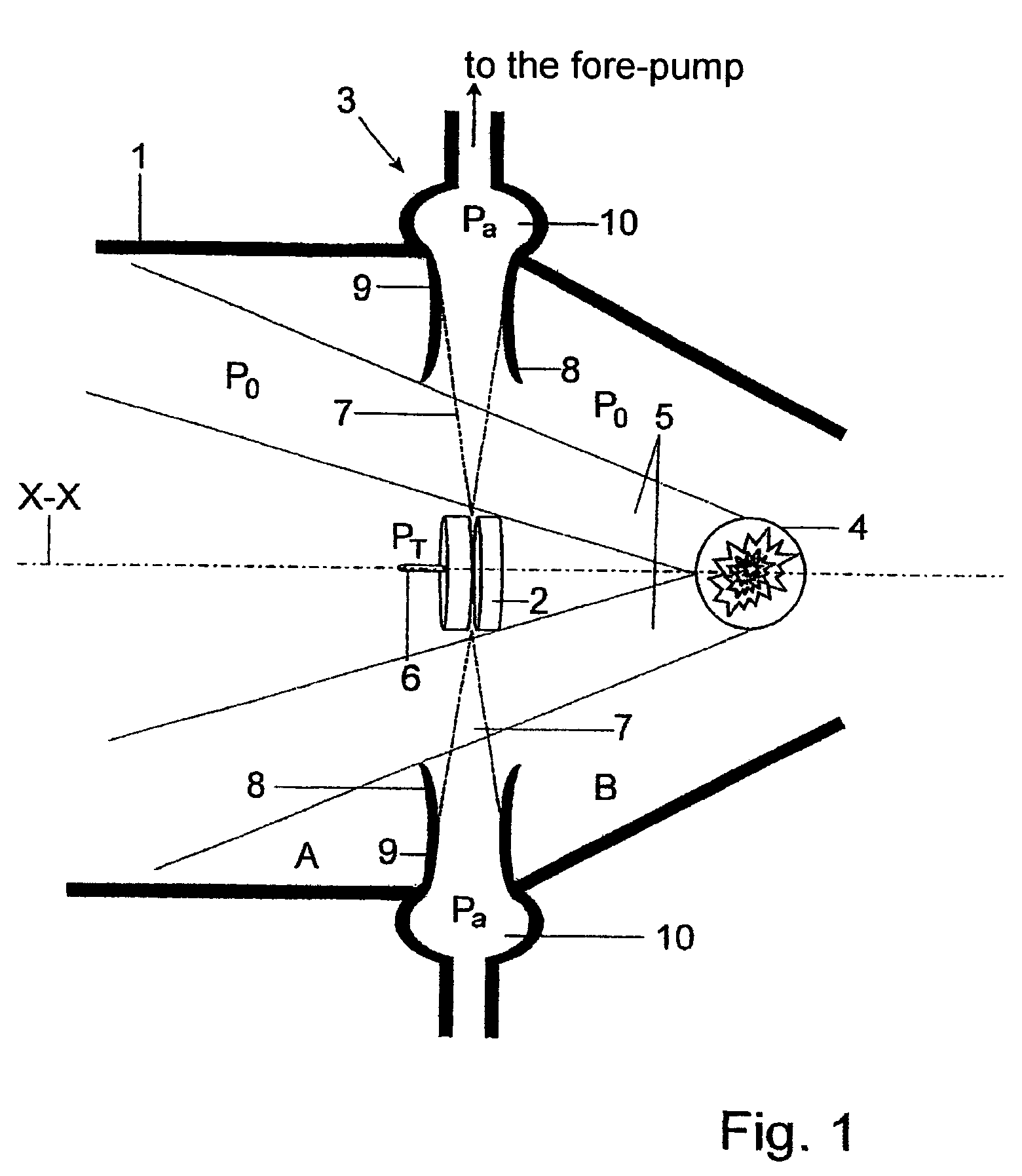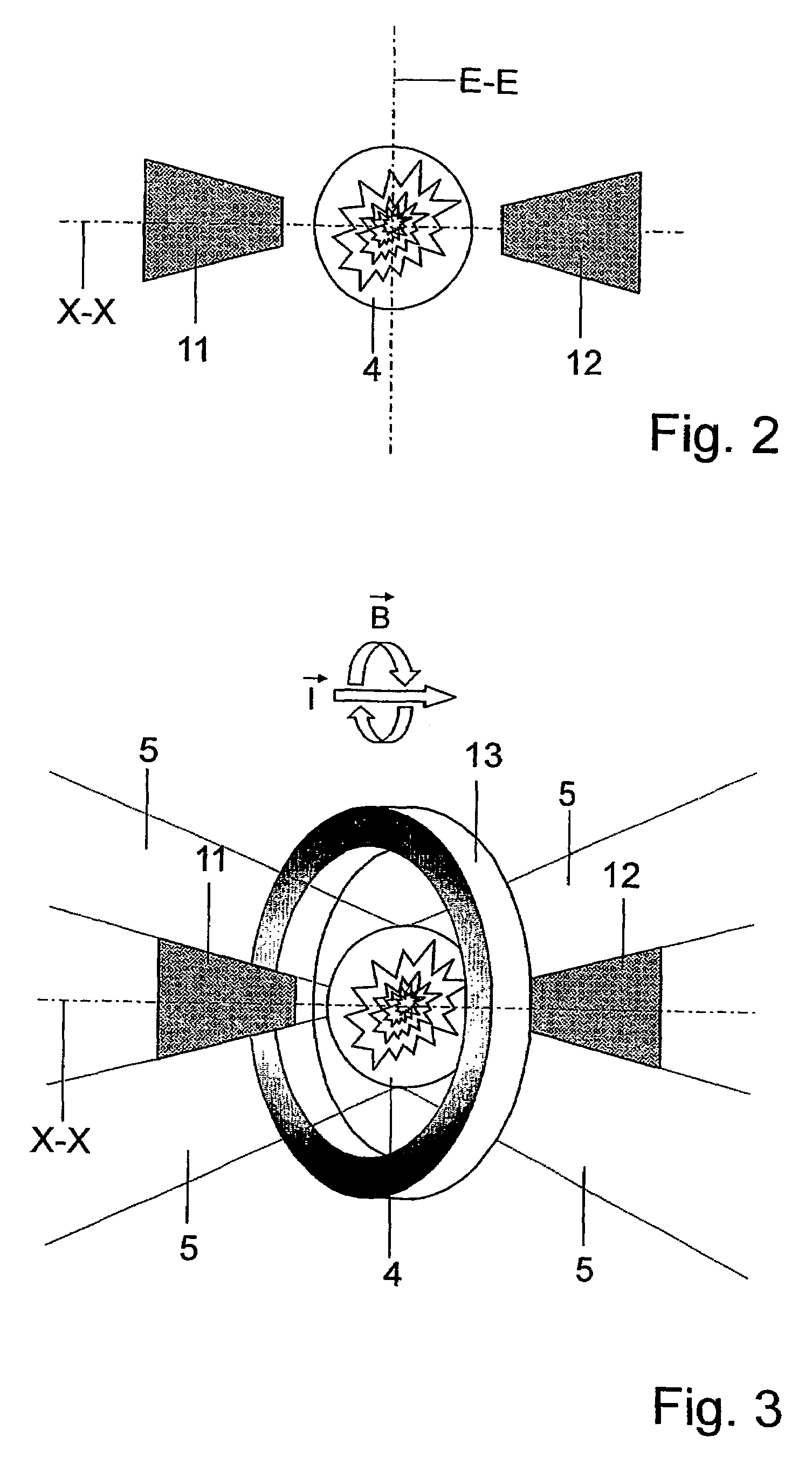Plasma radiation source and device for creating a gas curtain for plasma radiation sources
a radiation source and plasma technology, applied in the direction of photomechanical equipment, instruments, nuclear engineering, etc., can solve the problems of limiting the lifetime of the required optics, rotating foil structures, and respecting the suitability for storage under vacuum, so as to achieve optimal conversion efficiency and increase the life of the optics which is limited by the influence of debris
- Summary
- Abstract
- Description
- Claims
- Application Information
AI Technical Summary
Benefits of technology
Problems solved by technology
Method used
Image
Examples
Embodiment Construction
[0033]In the plasma radiation source shown in FIG. 1, a Laval nozzle serving as a propulsion nozzle 2 of a gas jet vacuum pump 3 is mounted in a vacuum chamber 1 on the axis X-X of the mean propagation direction of radiation 5 generated by a plasma 4.
[0034]The propulsion nozzle 2 is acted upon by an inert gas at a propulsion pressure PT through a supply channel 6 and generates a circular supersonic gas jet 7 that is directed on the radial outside to the chamber wall of the vacuum chamber 1. The supersonic gas jet 7, which can extend at right angles to or at some other angle to the axis X-X or which can also propagate conically, opens into an annular mixing nozzle 8 which tapers to an annular throat 9 and finally passes into the annular diffuser 10 of the gas jet vacuum pump 3. The diffuser 10 is evacuated to a gas pressure PG by one or more suitable vacuum pumps acting as fore-pumps. The gas jet vacuum pump 3 takes over two functions which are essential for the plasma radiation sour...
PUM
| Property | Measurement | Unit |
|---|---|---|
| solid angle | aaaaa | aaaaa |
| melting | aaaaa | aaaaa |
| electrically conductive | aaaaa | aaaaa |
Abstract
Description
Claims
Application Information
 Login to View More
Login to View More - R&D
- Intellectual Property
- Life Sciences
- Materials
- Tech Scout
- Unparalleled Data Quality
- Higher Quality Content
- 60% Fewer Hallucinations
Browse by: Latest US Patents, China's latest patents, Technical Efficacy Thesaurus, Application Domain, Technology Topic, Popular Technical Reports.
© 2025 PatSnap. All rights reserved.Legal|Privacy policy|Modern Slavery Act Transparency Statement|Sitemap|About US| Contact US: help@patsnap.com



